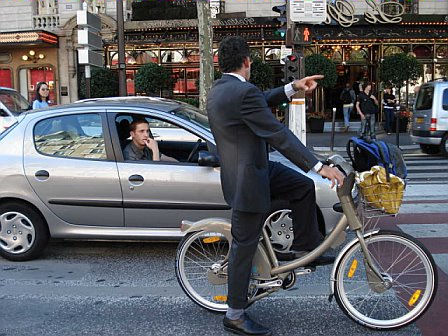Shortlist of on-going Transformative Realities and Trends
 One of the great recompenses of having watched the sustainable transportation and related technology developments evolve over the course of several decades, is that if one takes the time to step back and scan the evidence for pattern breaks, one can readily spot a certain number of trends, fundamental structural changes, quite a few of which bode well for a different and better future for transport in and around cities. Here are a handful of the fundamental underlying changes which I have spotted over the last decades on the mobility beat and which I would like to share with you this sunny COVID morning. Let’s start with a simple listing and then go on to brief comments in an attempt to clarify.
One of the great recompenses of having watched the sustainable transportation and related technology developments evolve over the course of several decades, is that if one takes the time to step back and scan the evidence for pattern breaks, one can readily spot a certain number of trends, fundamental structural changes, quite a few of which bode well for a different and better future for transport in and around cities. Here are a handful of the fundamental underlying changes which I have spotted over the last decades on the mobility beat and which I would like to share with you this sunny COVID morning. Let’s start with a simple listing and then go on to brief comments in an attempt to clarify.
– PS. G. K. Chesterton put it like this: “If a thing is worth doing . . . it’s worth doing badly” . (We’ll leave it to you to sort that one out)

 We often hear that sustainable transportation reform is going to require massive public investments, large construction projects, elaborate technology deployments, and above all and by their very nature are going to take a long time before yielding significant results. This is quite simply not true. This approach, common in the last century and often associated with the “American transportation model”, no longer has its place in a competitive, efficient, democratic city And we can start tomorrow, if we chose to.
We often hear that sustainable transportation reform is going to require massive public investments, large construction projects, elaborate technology deployments, and above all and by their very nature are going to take a long time before yielding significant results. This is quite simply not true. This approach, common in the last century and often associated with the “American transportation model”, no longer has its place in a competitive, efficient, democratic city And we can start tomorrow, if we chose to.
 Why do we bother to do this year after year? After all, there is copious documentation and background available at a click, as a quick tour of Google of those three little words yields somewhat more than 55,000 entries, including a fair if distinctly uneven introduction in the Wikipedia article
Why do we bother to do this year after year? After all, there is copious documentation and background available at a click, as a quick tour of Google of those three little words yields somewhat more than 55,000 entries, including a fair if distinctly uneven introduction in the Wikipedia article 








 Why do we bother to do this year after year? After all, there is copious documentation and background available at a click, as a quick tour of Google of those three little words yields somewhat more than 55,000 entries, including a fair if distinctly uneven introduction in the Wikipedia article
Why do we bother to do this year after year? After all, there is copious documentation and background available at a click, as a quick tour of Google of those three little words yields somewhat more than 55,000 entries, including a fair if distinctly uneven introduction in the Wikipedia article 




